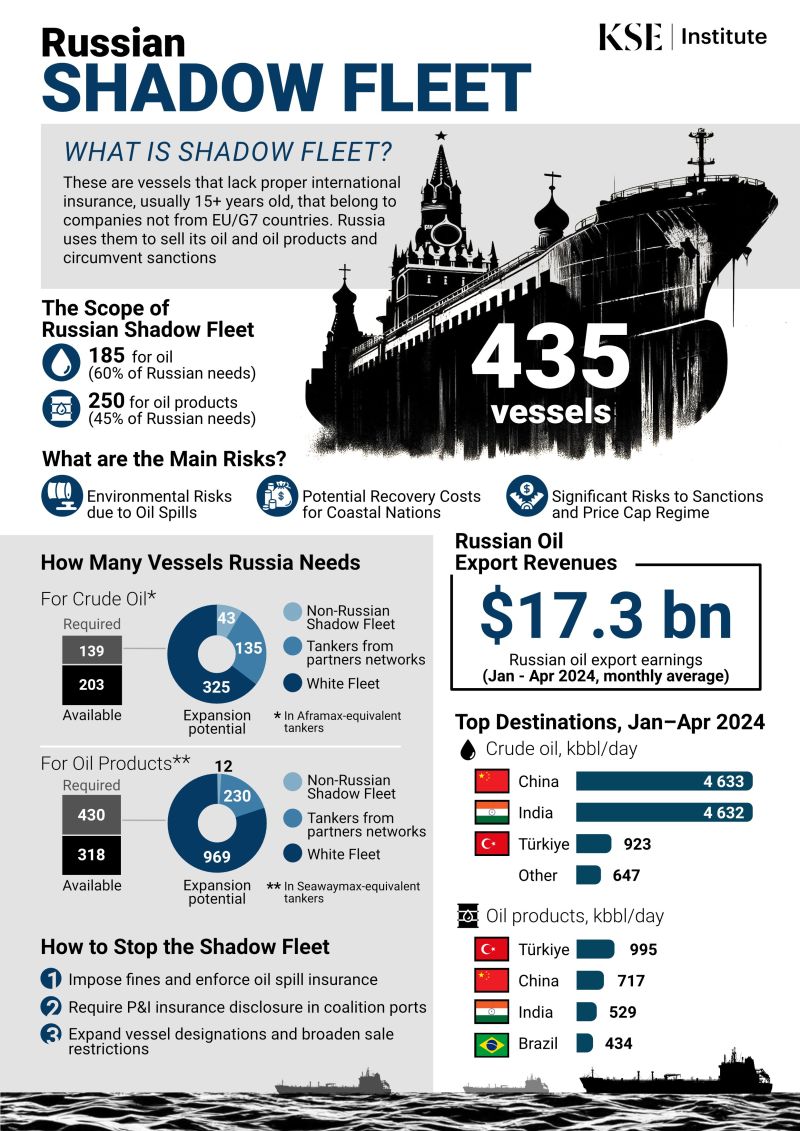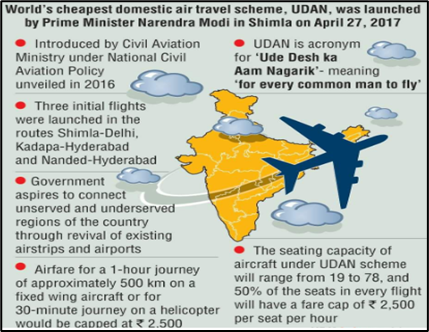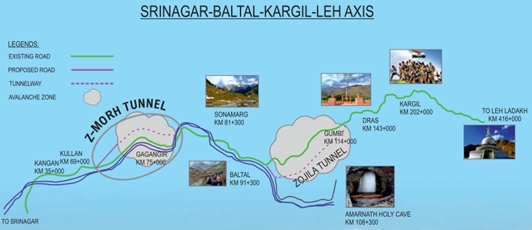|
6th India-Singapore Defence Ministerial Dialogue
- Raksha Mantri Shri Rajnath Singh and Minister of Defence of Singapore Dr Ng Eng Hen co-chaired the sixth India-Singapore Defence Ministerial Dialogue in New Delhi on October 22, 2024. Both Countries acknowledged the deep and long-standing bilateral defence relations based on shared outlook on regional peace, stability and security.
- This meeting assumes significance in the backdrop of India marking a decade of its Act East policy, in which Singapore has played a key role in promoting economic cooperation & cultural ties, and developing strategic connectivity with countries in the region.
- As 2025 marks 60 years of establishment of diplomatic relations between India and Singapore, both Countries agreed to further step up defence cooperation and agreed to achieve new feats. They also agreed to extend bilateral agreement on Joint Military Training Army for the next five years.
- Recognising that both nations are natural partners for commencing co-development and co-production of defence equipment, both sides agreed to enhance industry cooperation, including exploring collaboration in niche domains such as automation and Artificial Intelligence, cyber security.
- Defence and Security Cooperation: India and Singapore share similar concerns about the challenges posed by terrorism and extremism and have found it mutually beneficial to evolve a broad framework of security cooperation. Singapore participates in Indian Ocean Naval Symposium (IONS) and multilateral Exercise MILAN hosted by Indian Navy.
- Singapore’s membership of Indian Ocean Rim Association (IORA) and India’s membership of ADDM+ (ASEAN Defence Ministers’ Meeting - Plus) provides a platform for both countries to coordinate positions on regional issues of mutual concern
|
CBD COP16
- Representatives from governments around the world have been gathering in Cali, Colombia, for the 16th Conference of the Parties (COP16) to the Convention on Biological Diversity (CBD).
- COP stands for "Conference of the Parties," referring to regular meetings of countries that have ratified a specific UN convention.
- In this instance, COP16 marks the sixteenth meeting of the Parties to the CBD, a treaty designed to promote sustainable development through biodiversity conservation.
- The last biodiversity conference, COP15, took place in Montreal in December 2022, where the Kunming-Montreal Global Biodiversity Framework (GBF) was established. This framework outlines:
- Long-term Goal: Achieving a world in harmony with nature by 2050.
- Short-term Targets: Twenty-three specific goals aimed at halting and reversing biodiversity loss by 2030.
Convention on Biological Diversity (CBD)
- The CBD, launched during the 1992 Earth Summit in Rio de Janeiro, is one of the most widely ratified UN conventions.
- It aims to conserve biological diversity, ensure sustainable use of its components, and promote fair sharing of genetic resource benefits.
- Parties to the CBD convene every two years to review progress and set new priorities.

|
|
eShram Portal
- Ministry of Labour & Employment launched the “eShram – One Stop Solution
- Aim: For registration and creation of a comprehensive National Database of Unorganized Workers.
- The term unorganised worker has been defined under the Code on Social Security, 2020, means a home-based worker, self-employed worker or a wage worker in the unorganised sector.
- It also includes a worker in the organised sector who is not covered by the Industrial Disputes Act,1947 or Chapters III to VII of the Code i.e.Employees Provident Fund, Employees’ State Insurance Corporation, Gratuity, Maternity Benefit, Employee’s Compensation.
- Facilitates: eShram has been integrated with the National Career Service (NCS) Portal where an unorganised worker can register on NCS using his/ her 12 digit Universal Account Number (UAN) and search for suitable job opportunities.
eShram Portal Key Benefits
- Help unorganised workers become aware of the schemes designed for them.
- Help to facilitate in identification and implementation of the Social Security & Welfare Schemes for the unorganised worker
- Integration of schemes: Platform currently integrates key welfare schemes like One Nation One Ration Card, Mahatma Gandhi National Rural Employment Guarantee Act, National Social Assistance Programme, National Career Service, and Pradhan Mantri Shram Yogi Maandhan.

|
IAEA’s Climate Change and Nuclear Power report 2024
- The 2024 edition of the IAEA’s Climate Change and Nuclear Power report has been released.
- Nuclear power is enjoying increasing interest as countries seek to strengthen energy security and decarbonize. A rapid expansion of clean energy technologies is required to achieve net zero emissions by 2050 and nuclear power is expected to play a key role, with the IAEA projecting a capacity increase of 2.5 times the current level by mid-century in its high case scenario.
International Atomic Energy Agency (IAEA)
- Founded in 1957 as an autonomous international organization under the United Nations (UN).
- The Agency’s genesis was U.S. President Eisenhower’s “Atoms for Peace” address to the General Assembly of the United Nations on 8 December 1953.
- Its primary mandate is to promote the peaceful use of nuclear energy while ensuring that nuclear technology is not diverted for military purposes, especially for nuclear weapons.
- Headquarters: Though governed by its own founding treaty, the organization reports to both the General Assembly and the Security Council of the United Nations, and is headquartered at the UN Office at Vienna, Austria.
Key Objectives:
- To promote safe and secure use of nuclear energy for power generation, medical purposes, and agricultural uses.
- To monitor and verify compliance with nuclear non-proliferation treaties such as the Non-Proliferation Treaty (NPT).
- To ensure that nuclear materials are not diverted from peaceful uses to military or weapons programs.
 Functions: Functions:
- Safeguards and Verification: Conducts inspections of nuclear facilities to verify that nuclear materials are not being diverted to weapons programs.
- Technical Cooperation: Provides assistance to member states in the peaceful use of nuclear technology for various sectors, such as healthcare, agriculture, and industry.
- Safety and Security: Promotes nuclear safety standards and assists countries in implementing measures to secure nuclear materials and facilities.
- Nuclear Energy Development: Facilitates the sharing of information and best practices related to the peaceful use of nuclear energy.
- Membership: Membership is open to all UN members and others willing to abide by the agency’s statute.
- Nobel Peace Prize: The IAEA, along with its Director General Mohamed ElBaradei, was awarded the Nobel Peace Prize in 2005 for efforts to prevent nuclear energy from being used for military purposes.
India and IAEA:
- India is a founding member of the IAEA.
- Following the ratification of the Treaty on the Non-Proliferation of Nuclear Weapons in 1968, all non-nuclear powers are required to negotiate a safeguards agreement with the IAEA, which is given the authority to monitor nuclear programs and to inspect nuclear facilities.
- India signed a safeguards agreement with the IAEA in 2009 as part of the India-U.S. Civil Nuclear Agreement, allowing IAEA to inspect its civilian nuclear facilities.
- India contributes to IAEA activities such as nuclear safety, security, and technical cooperation
|
India-China Border Patrol Agreement
- India and China have reached a signiificant agreement to restore patrolling rights to each in the Depsang Plains and Demchok region, these are areas where the problems are called legacy issues, predating the 2020 Chinese incursions.
Background (The Galwan Clash Backdrop)
- In a major escalation along the Line of Control, Indian and Chinese troops clashed in the Galwan Valley on June 15, 2020.
- This incident was the first deadly confrontation in the region since 1975 and resulted in casualties on both sides.
- The root cause is an ill-defined, 3,440km (2,100-mile)-long disputed border. Rivers, lakes and snowcaps along the frontier mean the line often shifts, bringing soldiers face to face at many points, sparking a confrontation.
- Border infrastructure developments and differing perceptions of the LAC had triggered the clash.
- Following the clash, both sides engaged in de-escalation talks amid heightened tensions in bilateral ties.
- The PLA''s 2020 incursions had severely restricted Indian Army patrols at key points in the Depsang Bulge and CNN Junction.
- However, the establishment of buffer zones in areas like Galwan, Khugrang, Gogra-Hot Springs, and Pangong Tso helped reduce tensions.

Key Points of the Deal
- The two sides have agreed that patrolling in the following two areas will be carried out up to the old patrolling points along the LAC.
- Depsang Plains in the north of Ladakh
- Demchok in the south of Ladakh
- This means that Indian troops can patrol up to patrolling point (PP) 10 to 13 in the Depsang Plains, and in Charding Nullah of Demchok.
- Ongoing Disengagement Process: The deal is part of a larger disengagement process that has seen successful pullbacks at several flashpoints, including Pangong Tso, Gogra, and Hot Springs. The current focus on Depsang and Demchok represents a willingness to address the more challenging aspects of the border dispute.
|
The Other Friction Points
- Besides Galwan, there are at least four other friction points along the Line of Actual Control. These are all disputed areas where Indian and Chinese soldiers fought in the 1962 war.
- Demchok: Demchok is split by the LAC. India controls the western part. The eastern side is under the control of China, which also claims the western part. The dispute hinges on historical treaties and the precise alignment of the LAC along the Charding Nullah. Recent talks aim at disengagement.
- Pangong: About 50 per cent of Pangong Lake area is in Tibet (under Chinese control), 40 per cent in Ladakh and 10 per cent is disputed. Discrepancies in LAC perceptions lead to military standoffs and buffer zones, with ongoing construction and strategic positioning reflecting the tensions and claims by both nations.
- Hot Springs: Located near Gogra Post, the Hot Springs area is significant for India due to its strategic location which facilitates surveillance over LAC. India''s control over this region enhances its defence posture, providing vantage points for monitoring movements in Aksai Chin, thus playing a crucial role in border security dynamics.
- Depsang: Depsang plains are critical for India due to their strategic access to the Daulat Beg Oldie (DBO) airstrip and the Darbuk-Shyok-DBO road. Control over Depsang prevents Chinese forces from threatening these vital logistics lines, making it essential for India''s northern border defence and military mobility.
|
|
|
KUNO NATIONAL PARK
- A female cheetah is pregnant and expected to deliver cubs soon at the Kuno National Park (KNP).
- On September 17, 2022, Prime Minister Modi released eight cheetahs — five females and three males – brought from Namibia into enclosures at the KNP as part of the world’s first intercontinental translocation of the big cats.
- In February 2023, another 12 cheetahs were translocated to the national park in MP from South Africa.
Kuno National Park – Key Facts
- Location: Madhya Pradesh.
- Area: Approximately 748 sq km.
- Established: Initially designated as a Wildlife Sanctuary in 1981, it was upgraded to a National Park in 2018.
- It is part of the Khathiar-Gir dry deciduous forests ecoregion.
Biodiversity and Ecosystems
- Flora: Predominantly dry deciduous forest, with significant presence of grasslands and scrub.
- Fauna: Flagship Species: Asiatic Cheetah (reintroduced in 2022 as part of India’s Cheetah reintroduction program).
- Other species: Leopards, Indian Wolves, Jackals, Nilgai, Chinkara, Sambar, and various species of birds and reptiles.
Cheetah Reintroduction Project:
- Kuno National Park was chosen for the reintroduction of Cheetahs in India, after being declared extinct in the country in 1952.
- The first batch of African Cheetahs from Namibia was released into the park in 2022 as part of a historic translocation project to restore the species in India.
- The park was originally identified in the 1990s as a potential site for the relocation of Asiatic Lions from Gir National Park (Gujarat), but this plan faced delays.
- However, the focus shifted to cheetah reintroduction due to suitable habitat conditions.
Geographical Features:
- The park is part of the larger Vindhyan hill ranges and lies within the semi-arid region of central India.
- Rivers: The Kuno River, a tributary of the Chambal River, flows through the park, providing an important water source for the wildlife.

|
|
Shadow Fleet / Dark Fleet ??
- The term "shadow fleet" has gained traction in discussions surrounding the Russia-Ukraine conflict, particularly regarding the transportation of Russian crude oil. Western media outlets depict this fleet as a network of tanker ships allegedly "laundering" Russian crude, with implications that countries like India are complicit in circumventing international sanctions.

What Are Sanctions?
- Sanctions are punitive measures imposed by one or more countries against another country, entity, or individual to influence behavior, often in response to geopolitical conflicts.
- In the context of Russia''s invasion of Ukraine, the U.S. has implemented several sanctions aimed at limiting Russia''s ability to finance its military operations through oil sales.
Mechanisms of Sanction Enforcement
- Asset Seizure and Freezing: U.S. sanctions target entities and individuals that violate these measures by seizing assets within the U.S. and freezing bank accounts linked to the Western banking system.
- Price Cap on Oil Sales: The sanctions dictate that Russia can only sell its crude oil at a maximum price of USD 60 per barrel, a strategy intended to curtail its profits and reduce funding for military actions.
Structure of Global Shipping
- The global shipping industry is multifaceted, comprising various stakeholders, ship owners, and regulatory frameworks.
- Ownership and Flags: The industry is dominated by Greek ownership (20% of the global fleet), with significant contributions from China and Japan. Ships are registered under flag states, which ideally indicate their country of origin.
- Flags of Convenience (FoCs): Nations like Panama and Liberia allow ship owners to register vessels under their flags to benefit from lower regulatory scrutiny and tax advantages, obscuring ownership.
- Classification Societies: These organizations certify ships for safety and environmental compliance, facilitating insurance coverage, including Protection and Indemnity (P&I) insurance for liabilities.
Challenges in Enforcing Sanctions
- Complex Ownership Structures: Many vessels operate under intricate ownership models, often involving shell companies that disguise the true ownership and origin of the ships.
- Flag Switching: Ships may change their flag to evade scrutiny, utilizing FoCs that do not comply with rigorous international maritime regulations.
- Insurance Loopholes: Ship owners can navigate around P&I insurance risks by contracting with European managers or registering under non-compliant jurisdictions.
India''s Role and Accusations
- Increased Registration: Following the sanctions, many Russian vessels sought connections with Indian shipping firms, resulting in a rise in registrations with the Indian Register of Shipping (IRS). Critics argue this links India to the shadow fleet narrative.
- Dubai as a Hub: Many Russian vessels shifted operations to Dubai, where Indian entities have a significant presence, raising concerns about the laundering of Russian crude.
- IRS Defense: The IRS has stated that its primary responsibility is ensuring vessel safety and that it provides classification services to ships under flags like Liberia and Cyprus, which do not raise immediate red flags.
|
|
UDAN Scheme
- The Indian government plans to extend the ‘UDAN’ (Ude Desh ka Aam Nagrik) regional air connectivity scheme for 10 more years.
Features of UDAN Scheme
- Launched in: 2016
- The Regional Connectivity Scheme (RCS)-UDAN (Ude Desh Ka Aam Naagrik)is a regional connectivity scheme.
- It is a vital component of India''s National Civil Aviation Policy (NCAP) 2016, launched by the Ministry of Civil Aviation (MoCA) in 2016, with a 10-year vision.
- The Centre’s UDAN (Ude Desh ka Aam Nagrik) scheme aimed at enhancing regional air connectivity and making flying more affordable was introduced in 2016 for 10 years.
- The UDAN scheme aims to establish air connectivity in underserved regional areas.
- The Scheme offers financial incentives to selected airlines, comprising concessions from central and state governments and airport operators.
- The government, under the scheme, provides financial assistance to selected airline operators through Viability Gap Funding (VGF).
- Notably, the scheme was initially launched for the period of 10 years, and now the government intends to extend this for 10 more years.
Implementing Agency: Airport Authority of India (AAI)
- Progress so far:
- Under UDAN, 601 routes and 86 airports have been made operational, serving over 14.4 million passengers thus far.
- Notably, the first flight under ‘UDAN’ scheme was inaugurated by Prime Minister Narendra Modi on April 27, 2017. This was from Shimla to Delhi.
- The scheme aims to provide opportunities to small regional airlines to scale up their businesses.

|
|
What Is Betelgeuse?
Betelgeuse is a red supergiant star roughly 700 light-years away from our own Solar System.
The second brightest object in the constellation Orion, the rust-coloured star has attracted attention from astronomers for centuries for its relative closeness and potential for collapsing in a spectacular supernova event within the next 100,000 years. A new study suggests that the Betelgeuse star’s enigmatic brightening and dimming patterns may be caused by an unseen companion star.
- Astrophysicists from the Flatiron Institute’s Center for Computational Astrophysics have proposed the existence of a companion star, dubbed “Betelbuddy,” orbiting Betelgeuse. Their findings indicate that this companion acts like a cosmic snowplow, pushing aside light-blocking dust and temporarily increasing Betelgeuse’s apparent brightness.
Details about Betelgeuse
- Type: Betelgeuse is a red supergiant star.
- Constellation: It is located in the constellation Orion, marking the left shoulder of the hunter.
- Brightness: Betelgeuse is usually the 10th-brightest star in the night sky.
- Distance: It is approximately 500 light-years away from Earth.
- Size: Betelgeuse is one of the largest stars known, with a diameter about 1,000 times that of the Sun.
- Luminosity: It is about 100,000 times more luminous than the Sun.
- Mass: Estimates suggest it has around 10-20 times the mass of the Sun.
- Variable Star: Betelgeuse is a variable star, meaning its brightness changes over time. It has two distinct pulsation patterns: a short term cycle of about a year and a longer six-year cycle. The researchers concluded that the longer cycle, known as a long secondary period, is likely caused by the Betelbuddy’s orbital motion through Betelgeuse’s surrounding dust.
- Recent Dimming: In late 2019 and early 2020, Betelgeuse experienced an unusual dimming event, leading to speculation that it might be about to go supernova. However, recent studies suggest that this dimming was likely caused by a large amount of dust ejected by the star.

|
Z-Morh Tunnel.
Recently, Seven people were killed in Jammu and Kashmir when suspected militants targeted the workers of infrastructure company APCO Infratech, which is constructing the Z-Morh tunnel on the Srinagar-Sonamarg highway.
Location of Z-Morh Tunnel.
- The Z-Morh tunnel is a 6.4-kilometer tunnel connecting the Sonamarg health resort with Kangan town in central Kashmir’s Ganderbal district.
- It is located near Gagangir village, just ahead of Sonamarg, and will ensure all-weather connectivity to the popular tourist destination on the Srinagar-Leh highway.
- The tunnel gets its name from the Z-shaped road stretch at the construction site.

- Commencement of the project
- The Z-Morh tunnel project, originally conceived by the Border Roads Organisation (BRO) in 2012, was initially awarded to Tunnelway Ltd.
- Later, the National Highways & Infrastructure Development Corporation Limited (NHIDCL) took over the project.
- Although expected to be completed by August 2023, the project faced delays.
- A soft opening took place in February 2024, but the official inauguration was postponed due to the Model Code of Conduct in place for the Jammu and Kashmir Assembly elections.
- Need for the tunnel
- The stretch where the tunnel is under construction is situated at an altitude of over 8,500 feet, and is prone to snow avalanches in the winter.
- The road to Sonamarg as such remains closed for most part of the winter.
- Strategic importance of the Z-Morh tunnel
- The Z-Morh tunnel, part of the larger Zojila tunnel project, aims to ensure year-round connectivity from Srinagar to Ladakh.
- The Zojila tunnel, connecting Sonamarg to Drass in Ladakh, is under construction and expected to be completed by December 2026.
- While the Z-Morh tunnel will provide all-weather access to the Sonamarg health resort, it is crucial for maintaining quick military access to Ladakh.
- The Z-Morh tunnel is key to enabling all-weather road connectivity between Srinagar, Drass, Kargil, and Leh, reducing dependence on air maintenance for forward military positions.
- This will improve troop and supply transport, lower costs, and extend the life of aircraft used by the Indian Air Force.
- The project is vital for Indian defense forces deployed in Siachen and Eastern Ladakh, where tensions with Pakistan and China persist.
Revival of Terrorism in Jammu & Kashmir - analysis
- Recent terror attack on infra project in J&K and the exposing of vulnerabilities
- The terror attack on workers of APCO Infratech, constructing the Z-Morh tunnel, marks a significant event in Jammu & Kashmir.
- It reflects the revival of terrorism and points towards a broader strategy aimed at exposing vulnerabilities in the region.
- The incident suggests a deliberate effort by Pakistan’s deep state to derail peace and stability, especially after the peaceful elections and installation of a democratic government in Srinagar.
- Deep state is an alleged secret network of especially nonelected government officials and sometimes private entities (as in the financial services and defense industries) operating extralegally to influence and enact government policy
- Pakistan’s Deep State and its Role
- The Pakistani deep state appears determined to re-establish its relevance in J&K by instigating violent events.
- Their goal is to obstruct India''s process of stabilizing J&K, particularly after the abrogation of Article 370.
- A strategic terror event like this attack is seen as a way to prevent peace dividends from taking root and ensure continued instability.
- Targeting Peripheral Areas and Infrastructure Projects
- While traditional urban areas like Srinagar, Anantnag, and Baramulla remain heavily secured, the attackers have shifted focus to peripheral regions with low security.
- The Z-Morh tunnel, a flagship infrastructure project, requires a large workforce and specialized expertise.
- The attack may indicate a larger threat to infrastructure projects in J&K’s peripheral regions, such as the Kishanganga project and railway projects in Banihal and Qazigund.
- Possible Chinese angle
- The People’s Anti-Fascist Front (PAFF), a Pakistani terror group, issued a statement praising The Resistance Front (TRF), an offshoot of Lashkar-e-Taiba, for the recent attack in Jammu and Kashmir that killed seven civilians.
- PAFF described the attack as "strategic" and claimed it was meant to disrupt Indian military deployments toward the eastern border, also citing "Chinese friends" as part of their justification.
- While China and Pakistan have known strategic ties, there is no evidence of Beijing’s involvement so far.
- Broader Pattern of Unusual Activities
- The attack could be part of a wider scheme targeting India’s emerging strategic confidence.
- Recent events such as bomb hoaxes, strange blasts, and diplomatic pressure over transnational issues appear connected, signaling a broader attempt to put India on the defensive.
The proxy war in J&K is far from over. While the frequency of violence has decreased, complacency must be avoided, and efforts should focus on combating terror networks, financing, and drug mafias to sustain stability in the region.
|









 Latest News
Latest News


 Functions:
Functions:





 General Studies
General Studies